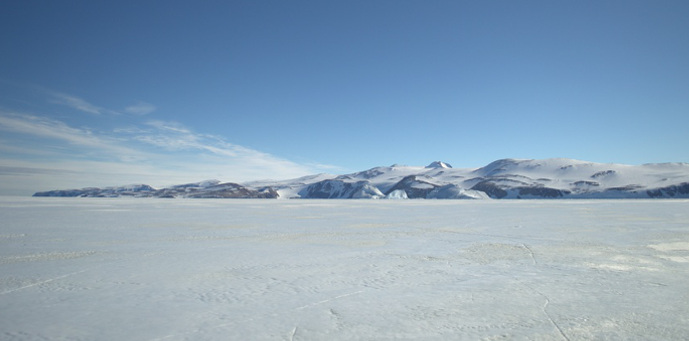The Lower Lake in the east of Antarctica is a fascinating body of water that has been covered with ice for an estimated 100 thousand years. It therefore represents a perfect location for meteorological research stations. For this reason, the SETI (Search for Extraterrestrial Intelligence) research institute recently installed a new meteorological station here.
The Untersee got its name from a German Antarctic expedition that took place between 1938 and 1939. As the researchers discovered, its chemical properties are quite special: for example, the lake’s sediments produce more methane than any other natural aquatic system on the planet, and the upper 70 meters of lake water has a high pH of 9.8 to 12.1 and a 150 percent supersaturation of dissolved oxygen. With an area of 11.4 square kilometers (4.4 square miles), the body of water has the largest surface area of any freshwater lake in the midst of the Gruber Mountains which are located in the center of what is known as Queen Maud Land. The lake is permanently covered with ice and is partially bound by glacial ice.
The SETI Institute recently installed a new weather station near the lake, which will also use a Lufft WS501-UMB. This, along with other sensors, will be completely self-sustaining in collecting data. In fact, the weather station is equipped with its own 150 AH (solar battery) power supply, which should be able to withstand the harsh weather conditions: The water temperature varies between 0.5 °C (32.9 °F) and 5 °C (41 °F) and the ice cover is between two and six meters (6.6 to 19.7 feet) thick.
Right now there is redundancy with another, older station consisting of a Lufft WS501 and some temperature-humidity sensors. Another station is planned, but in 2014 it was not possible to install it due to weather conditions. So this will probably be made up for in November 2015, when the weather conditions are a bit milder. The prevailing ambient temperatures range from -20 °C to 5 °C throughout the year.
Soon the data will be transmitted and it is exciting to see what it will reveal for the exploration of the undersea as well as the whole Antarctic.
About the SETI Institute
SETI stands for Search for Extraterrestrial Intelligence and is a private, non-profit institute dedicated to scientific research, education and outreach regarding the search for extraterrestrial life forms. It was founded in 1984 and consists of three centers: the SETI Research Center, the Carl Sagan Center for the Study of Life in the Universe, and an Education and Outreach Center. It employs more than 130 scientists, faculty, and support staff.
Research Director Dale Andersen’s investigations take him to diverse environments such as the Chilean Atacama Desert, the permafrost of Siberia, the world’s northernmost lakes and springs in the Canadian Arctic, and the depths of the polar oceans. His mission is to explore the unknown.
Images: Terskov/Fotolia, Dale Anderson/SETI (2)



